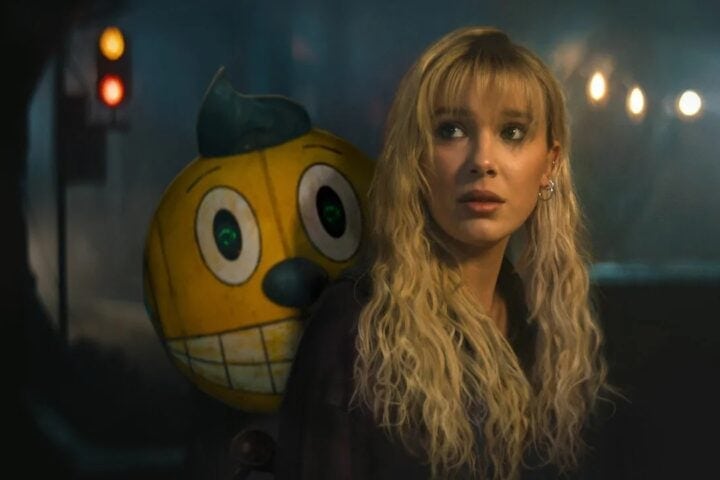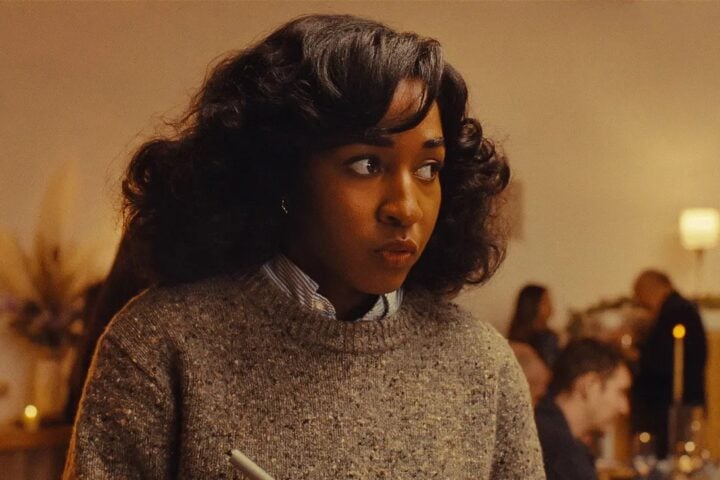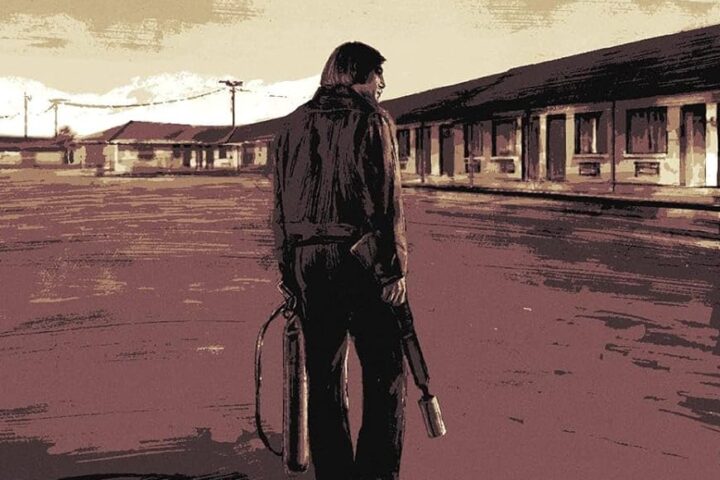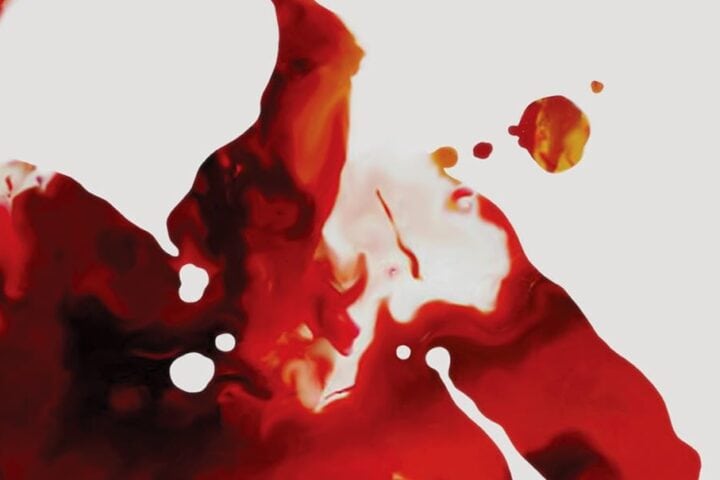Following a string of commercial and critical successes that made Oliver Stone the most talked-about emergent American filmmaker of the late 1980s, 1994’s Natural Born Killers was the passion project that wiped out all the goodwill granted by the likes of 1986’s Platoon and 1991’s JFK. The extraordinary formal inventiveness of the latter carried over into this film, making it the second in what would become a loose aesthetic trilogy that would include the subsequent year’s Nixon. Fittingly, this is the rambunctious middle child of the three, eschewing its peers’ evocatively impressionistic approach to political history for a caustic present-day satire.
Admittedly, “satire” might be a generous assessment of this film’s bull-in-a-china-shop approach. Heavily reworking a more straightforward, Badlands-inspired screenplay by Quentin Tarantino, Stone warped the story of spree killers Mickey (Woody Harrelson) and Mallory Knox (Juliette Lewis) around a host of contemporary sensationalized crime stories like the O.J. Simpson and Menendez brothers trials. A demented romance thus became a reaction against contemporary media culture’s valorization of both criminals and the carceral state in pursuit of them.
The film’s visual language, though, almost never aligns with the actual aesthetics of even the tackiest of mass culture that the director seeks to indict. The image regularly cuts between shooting formats so that oversaturated 35mm collides with gritty, black-and-white 16mm or splotchy, pre-digital TV video. The editing constantly jumps around continuity in favor of visual impact in ways that don’t mimic the on-the-beat imagery of contemporary music videos, instead offering hallucinogenic glimpses into the ways that the characters see themselves and the world around them. The phantasmagoric images are intoxicating, but they regularly subordinate Stone’s commentary to the synapse-frying pleasures of the surface level.
Among the highlights of Natural Born Killers are the times that it does channel televisual aesthetics. One of its sharpest moments of textual and visual commentary is how the backstory of Mallory’s abusive childhood is presented as a demented riff on a multi-camera sitcom. Elsewhere, Stone pushes true-crime docuseries tropes to and then beyond their most extreme limits in depicting the show of documentarian and host Wayne Gale (Robert Downey Jr.). Downey plays Gale more like a televangelist than a mere emcee, at once wracked with disgust for the Knoxes but salaciously lingering on every one of their sins in order to pull in an audience. In these moments, Natural Born Killers lands on just the right match of form and function.
What makes the film an enduringly fascinating achievement is the manner in which its most maddening weaknesses are fused with its strengths. It works less as culture commentary than as a demonstration of a dynamic filmmaker at his most visually uninhibited. Though Nixon would retain many of the outlandish in-camera and editing techniques of Natural Born Killers and JFK, Stone clearly recognized that he had taken this approach to its furthest point, and his work after 1995 would, for good and ill, never attempt anything like this again.
Image/Sound
Shout! Factory’s UHD transfer of the director’s cut comes from a new 4K restoration approved by Oliver Stone, and the video admirably captures the strengths and limitations of the various shooting formats. For one, the 8mm and 16mm shots balance thick grain with depths of detail heretofore unseen in the film’s previous home video releases. The Dolby Vision HDR further boosts the saturated colors, giving this kaleidoscopic film even more eye-popping intensity. (The accompanying Blu-rays are sourced from the same restoration and look similarly strong but lack the added boost of HDR.) The 5.1 surround audio is suitably chaotic but manages to juggle the film’s overlapping roars of noise and its many aggressive soundtrack needle drops without overwhelming any element, and dialogue remains consistently clear amid the din.
Extras
Among the extras included on this three-disc edition is a handful of new interviews with crew members, such as editor Hank Corwin and cinematographer Robert Richardson, who offer ample insight into their creative processes. The release also comes with a series of archival features, most notably a commentary by Oliver Stone that’s both informative and braggadocious, revealing the immense skill he wielded on the project but also the blind spots that unwittingly limit the critical efficacy of the film’s satire. Also of a note are a few featurettes the focus on the film’s making and the swarm of controversy that greeted its release.
Overall
Oliver Stone’s splenetic, sophomoric, but nonetheless captivating media satire looks better than ever on Shout! Factory’s gorgeous, three-disc 4K Ultra HD release.
Since 2001, we've brought you uncompromising, candid takes on the world of film, music, television, video games, theater, and more. Independently owned and operated publications like Slant have been hit hard in recent years, but we’re committed to keeping our content free and accessible—meaning no paywalls or fees.
If you like what we do, please consider subscribing to our Patreon or making a donation.




